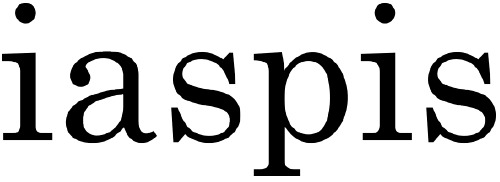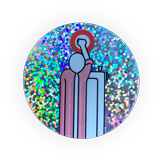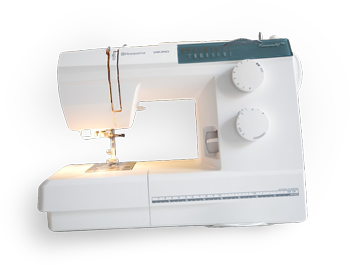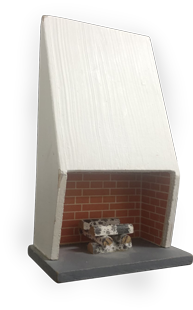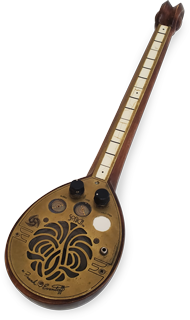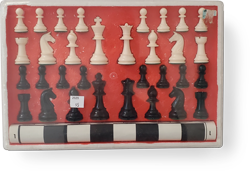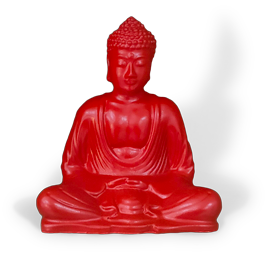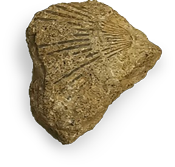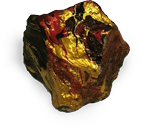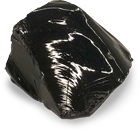of this place.
Come in.
You are welcome.
of this place.
You are welcome.
Frida Hållander and Åsa Norman (SWE)
Studio 2, Studio grant holders in Stockholm 1 October 2020 – 31 March 2021
Where are you right now?
At the moment the project Factory girl is in the process of making art objects and a book together with Konstfrämjandet. We are planning to include practitioners, writers and artists in the book. Amongst others we are including a text by the Bangladeshi activist, journalist and writer Sushmita Preetha, where she writes on the situation for textile workers in Bangladesh and how their rights are constantly violated, also how Covid-19 has pushed these workers into further difficulties.
What does this moment mean?
This moment means a time when we have an opportunity to work on the project Factory girl in conversation with a range of practitioners here at IASPIS.
Us
We have known each other for a long time. We have been working with other projects for 5-6 years, and with this project for 2 years.
Åsa got a baby, Sasha, on January 6th. So, mainly Frida has been in the studio since then.
We organised an exhibition and a conference in the beginning of October, which coincided with the start of the residency at IASPIS. It was a conference and an exhibition at Mint in ABF-house, in Stockholm.
In the studio, we are writing an ontology, collecting different texts. So, we are kind of editors. There will be texts written by us, and we have some drafts.
The continuation of the book-project is hindered due to covid, and Frida started an embroidery project.
Tatiana Pinto (BRA/SWE)
Studio 7, Studio grant holder in Stockholm 1 October 2020 – 31 March 2021
Where are you right now?
I am questioning which are the forms that my research project could take. Is it a film, a theatre play, a conversation, an installation with pieces of the story in texts, images, objects? While having to decide the media to convey my message, I am also questioning who my audience is, who do I want to communicate with, what is the purpose of this piece to exist in the world? Where, how and when would it make more sense to exist? The questioning could be paralysing, so I am also trying to not be trapped in those questions. Maybe I have to imagine a fictional ‘event’ to format the research. Could Open Studios be that event? Would it be more interesting to show a process in the Open Studios, or is it a performance of the well-behaved artist?
What does this moment mean?
It is a precious moment. A moment of opportunities, an opportunity for the research and an opportunity for myself. A chance that could not be discharged but should be well played because it is an opportunity for the research to expand, to gain different forms. There is also a slight pressure to deal with.
Me
I am an architect. I come from Architecture. How can I work with architecture in other ways? IASPIS is an experiment of that.
What are other spaces that the architect can occupy which are beyond the drawing table?
‘Me’ at IASPIS is a discovering momentum of that space I can exist in, as a female architect.
A space of dialogue, of opening, of exchanges. The exchanges that happen at IASPIS are so inspiring and have exposed me to a wide range of options, both in terms of thinking strategy, methods, approaches and techniques. The ‘Me-myself’ inside the studio door has been very much enriched by the encounters with my contemporary residents. My ‘Me’ here is definitely 10 plus personas.
Linda Hofvander (SWE)
Studio 4, Studio grant holder in Stockholm 1 October 2020 – 31 March 2021
Where are you right now?
I have been working on a series of textiles presented as photographs, which relates to the house where I grew up. It is a house that no longer exists, and while it was disappearing, I made these memory objects from measurements of things in the house.
What does this moment mean?
This work springs from a personal situation, and has been a very valuable time for me privately and as an artist. It has also brought questions to my practice, which I take with me. It is linked to my residency at IASPIS in terms of time, and I’m happy to have some kind of closure showing this work as an exhibition in March.
Me
I am sewing. A lot.
At the end there will be photographs.
It´s a very valuable moment.
I haven’t prepared anything…
My background…I´ve always been a photographer. A visual artist, a photographer.
I took my BA in London, my MA in Gothenburg. In Photography.
I always build the things I photograph. I always long for something crafty. I have this duality.
I´m interested in the photographic image.
How I think about my work is through photography, especially in this project. I have been sewing for 3 months, reminding myself almost that I am a photographer.
People I meet here do not see me like that. Sometimes it´s good to let go of who we are.
We are building a house. When I started the residency, we were demolishing an old house.
It´s emotional.
This is what became my project.
Packing it. Measuring things in the house.
Windows. Stairs.
Elements in the house.
That I just wanted to keep in my memory.
Throwing things out.
I found some fabrics in the house.
I wanted to do something with this fabric.
I started sewing with elements, 1×1 dimensions.
Stairs.
I made it all flat.
I was always thinking that I should make something sculptural with this photographic work. From the beginning I made these lines. It´s a drawing of a 2-dimensional room.
It´s a flat surface. A flat sculpture.
Stairs, window. I scaled some things down to stay true to the fabrics.
Dark blue living room floor.
Room divider.
Table.
Ceiling in one of the rooms. I know exactly what ceiling, it used to be my room.
It´s very private. Memory. Photography.
My mother died 3 years ago and my father was moving out.
These are my mother´s fabrics. It´s a way to take care…caring for these fabrics, ironing them. That´s how I engage in this work.
I have an exhibition in the beginning of March, and I´m working towards that.
Félicia Atkinson (FRA)
Studio 5, IASPIS online residency France, 16 January – 31 March 2021
Working in collaboration with International Dance Programme grant holder Rebecca Chentinell
Where are you right now?
I am currently in a beachtown called Hauteville Sur Mer in Normandy, France.
What does this moment mean?
I would say the moment means I am in the world, connected to it, breathing, writing and listening.
I am sending an image of something I am seeing every day, as I don’t currently have a studio or a room of my own.
Me
I am a musician, artist, mother, citizen, currently working and leaving in Normandy, France, by the shore of the Manche Sea.
My work is wondering about what it is to listen, to create a language in between different mediums, a sensation of space, time and reflexion in between sound, shapes and words.
Katarina Burin (SVK/CAN/USA)
Studio 1, Studio grant holder in Stockholm 8 November 2020 – 31 March 2021
Where are you right now?
What does this moment mean?
I’m living between two times. Though fully present here on Södermalm—in Central European Time—my teaching responsibilities at Harvard keep me Zoom’ed some days onto Eastern Standard, keeping up with meetings and discussions that stretch to 2am here. I end many nights walking the short ten minutes between the studio and my apartment through the completely empty 3am Stockholm streets.
This is a perfect state to be in during a global pandemic: Staying up too late, getting up too early, getting up too late, missing the daylight, missing the sun, missing some meetings, missing people, and never getting anything done. A lot of back and forth from computer to cell phone, from the studio to the apartment, from the east coast of the US to the waters of Stockholm. Catching up, rescheduling, apologetic and embarrassed, frantic, eventually hopeful, and then mildly euphoric until the cycle happens all over again.
Things should all happen at once, everything and everyone is requesting reaction and action IMMEDIATELY, everything at the same time and now. But the crisp winter air, relentless darkness and muffled acoustics of the snow add to a sense of longing and the feeling of a semi hibernation, perhaps never to end. The studio at IASPIS is a refuge from grogginess and total solitude. Other fellows keep me sane and inspired.
My artwork is in a place like that of the time zones, with not one core, no single locus of gravity but instead with multiple thin delicate threads leading outwards in several directions. Many new pathways opening up, crisscrossing with the old unfinished beginnings of the recent past. 3am CET is friendly with the 9pm EST and together we make it feel like there are many possibilities.
Before coming here, I had recently wrapped up a long-term project—almost ten years long—creating, exhibiting, designing the work of a fictional architect. Petra Andrejova-Molnár was an invented center for me in many ways. To make her work I had to learn new ways of working (furniture, ceramics, exhibition design and more) and of researching. I put feminist pressure on the histories of design and of modernism. And it became in many ways a personal project: through an immigrant story I was surely reflecting on my own experiences trying to reconnect with my European and Eastern European past. That is one reason why it is exciting to be here in Sweden. My work is at a point of invention and new projects: a tangle of leads and possibilities.
But now I have to make sense of the threads. So many loose threads. There’s….
…Slovakia, Yugoslavia, the UNHCR cabin, my parents telling the story, the public concrete monuments of moments of banality with private inserts, public and private confusion, communism, capitalism and everything in between, drawing, objects, moulds, maps, bronze casting, Fran Hosken, Hanna Kucerova-Zaveska, Ingeborg Wærn Bugge, Léoni Geisendorf, housing for single women, communal housing, real estate and plaques…
This is where I’m at with the work. In the next two months I’d like to start making sense out of some of this – well not exactly making sense but rather deepening the connections and becoming more thorough with my prodding and investigating. I am investigating neglected pasts as possible futures. I want to be like a woman police investigator in Nordic noir.
Stefan Tcherepnin (USA)
Studio 3, Studio grant holder in Stockholm 4 November 2020 – 31 March 2021
Where are you right now? What does this moment mean?
What am I going to do?
What have I done?
I have a tendency
To contextualise everything. Or, rather, to decontextualize, then recontextualize.
Dragging isolated elements out of childhood memories or dreams, for example,
decontextualizing them and then casting them in new, contemporary roles.
Constructing a fiction from fragments of alternate realities.
I’m proposing a process of discovery, a process that moves towards some unknown.
In the present moment of transition, I´m undergoing my own process of discovery.
I have just applied for Swedish residency, to live here with my family.
And it´s a new phase in my life. Future unknown.
I no longer have an address in the USA. I´m not accustomed to this level of instability.
I think I’m trying to apply that feeling to various forms of expression. Otherwise, it has
the power of paralysis. Manifesting instability through objects and their relationship to
other (non-)objects in exhibition settings.
What are you thinking, Stefan, the galleries ask.
We’re working together on solving a problem: how to make an exhibition in the current
state of things. What does that even mean?
While also turning deeply into my own musical practice, this unstable moment has
opened up a lot of possibilities for generating interesting material. Paul and I spend
several hours together at a time improvising, repeating, refining, relearning, dismantling,
rebuilding, rehearsing… That’s the process. There is no end result, no expectations.
Only sonic snapshots of where we’re at in our own process of discovery.
I´m wondering how to even give some kind of performance? What would it be? Where
would it take place? Who would be the audience? Where would they stand in relation
to the performance? I must get out of my comfort-zone, whatever that is.
It’s like working with unfamiliar materials; I am forced to learn.
Expectations, high or low, paralyze me. Better to have none.
Ayedin Ronaghi (IRN/SWE)
Studio 8, Studio grant holder in Stockholm 11 January – 31 March 2021
Where are you right now?
I’m in Stockholm, in my studio at IASPIS, preparing some new works for my upcoming exhibition at Eskilstuna Konstmuseum in March.
What does this moment mean?
Lots of reflection. Both on my work and life in general. We are living through an extreme period right now and I guess in many ways it’s been a transformative moment for me as well.
Selim Ben Cheikh (TUN)
Studio 6, IASPIS online residency Tunisia, 16 January - 31 March 2021
Where are you right now?
Currently I am in my office, which serves as a port. When I paint, I go to sea. When I want to think, I join my office overlooking the sea and it allows me to see the open sea without being there.
What does this moment mean?
Each moment is an infinity of possibilities, a multitude of becomings, I always try to grasp the right one.
Me
Selim. Visual artist.
I was born in ´79 in Tunisia. I live in Tunisia.
I studied in the Fine Arts Institute and continued my studies at the Sorbonne, in Aesthetics and Science of Art.
I had three exhibitions in Paris 2005,2006,2007. And my first solo in Tunisia was in 2014.
I´d had group exhibitions in the meantime, and residencies.
The IASPIS residency is my 5th.
Two in Paris, one in Belgium, one in Tunisia, and IASPIS.
I work with transformation in the Arab world. My work is always politically engaged.
My paintings are not poetic, but political.
I paint on the floor, 2-3 days a week. And I´m not easily satisfied.
Everyday I have the sea in front of me.
Everyday I go to sea just to see the horizon.
Everyday I make a lot of videos about the horizon.
I will show you my window.
Before sunset.
Juan-Pedro Fabra Guemberena (URY/SWE)
Studio 9, Studio grant holder in Stockholm 1 October 2020 – 31 March 2021
Where are you right now?
What does this moment mean?
I don’t know how to describe my practice right now. It´s all over the place.
I can say a few things about this past year.
We are living a very specific moment. I don’t like the idea to pretend we are not. Emulate a situation that is not happening.
The last work that I did publicly was this past summer, at Göteborg Konsthall, mid pandemic.
We were on lock-down in Berlin and I couldn’t go to Göteborg. We were almost shutting down the exhibition.
And I thought it would be interesting to make a work that became a time-stamp.
For a long-time I wanted to work with my childhood friend, Sergio Blanco, who was confined in Paris.
So, he gave me a script. And I invited Ossi Koskalainen, an actor confined in Helsinki.
I directed, and we filmed the whole thing through a mobile phone.
The phone was our tool to direct and to mediate the play.
The play was based on the Greek classic Cassandra.
And it´s interesting how this device now allowed me, in a creative and fluid way, to return to an old Greek form, which is the mask.
We were applying different filters, returning to a traditional Greek format, using the mask almost like an actor would. Adding layers to the character.
The play happened through a live-feed on Instagram, and you can watch it through your cell-phone. It became a time-document.
The spirit of going into this, is a bit the same.
In my case, what I´m doing is going back to the ruin of the refugee camp that I came to as a child to Sweden, with my family, in the 70s.
I have done different works with this site, these remains of the camp, trying to get to a more intimate place.
That intimate place is this archaeology of senses and memories.
The room that I was sleeping in. And trying to connect to that room, the memory of that room, the experience of that room through painting.
I was inspired looking at the decorated walls in Pompei, the first style. They were small, cramped rooms, and the decoration of the walls added to how we perceived the room. There is always an infliction point.
This is how I´m going to solve the problem of feeling of that room. Almost like abstract paintings.
I guess I like to make things complicated. You know, you’re a guy…abstract paintings…pre-conceptions, the weight of history.
So, I decided to work with a psychiatrist. I realised I needed help.
I´m not interested in the form, I´m interested in the concept. And going deep into me.
Being confined becomes a rich moment, though tough.
Finally, something is happening conceptually: Abstract painting as a concept.
Rothko had these painful images. The only way to show it us was to blur them out.
Dwelling in all these different ideas, concepts…In psychology, there´s a notion of Apophenia, which is described as a pre-psychotic state.
When the patient puts together things that have no relation to one other, and starts to make meaningful associations.
And to go back to this site, this ruin now, is a looking for traces.
And conceptually finding a way of starting to think this process, trying to make sense of these small traces.
4 months ago, there was a book-launch in Index, in Stockholm. They used those pictures of the ruins in a publication.
There are two pictures that I return to often. One of myself. And I have now a picture of the same place, almost 30 years later.
It was difficult finding the spot where the picture was taken.
But finally, I recognised on the ground, some metal plates…
It’s about identifying these small objects, and putting together a riddle.
Rebecca Chentinell (SWE)
Dance Studio, Studio grant holder at The International Dance Program in Stockholm 18 January – 31 March 2021
Working in collaboration with IASPIS online grant holder Félicia Atkinson.
Where are you right now?
I am fortunate to be in a very intense and rewarding place and phase, in a very strange time, which is both exhausting and extremely inspiring.
What does this moment mean?
This moment I experience as a kind of vacuum, or altered perception of time, where you both zoom out and get different perspectives, on all aspects of life, and living, dealing with quite existential questions in relation to one’s own life, as well as on a more collective and planetary scale. And at the same time, perhaps out of necessity, an urge for a stronger presence in the moment, or in what you do, in what you give your time to. I see it also as a time or moment for transformation, where you don’t really know how or in what way you and the world around you will transform, but you know it’s unavoidable. And this also brings a sort of emphasized presence and value, seriousness and urgency to the moment that we are in.
Me
I live in the countryside, in the woods outside of Gnesta. I started this residency on the 18th of January. Me and Félicia are invited with our own practices as well as our collaborative work. So, our individual practices and collaboration move along in parallel.
I work both artistically and curatorially. At the moment I am working on a solo dance work, Thread (to which I have also invited Félicia to collaborate) that will be presented in April at Marabouparken konsthall in the exhibition Centauring, curated by Marie Fahlin.
I also work with Rickard Borgström with a long-term curatorial project, a choreographic and curatorial investigation of post-humanistic and post-anthropocentric ideas in the interface between visual art and dance/choreography. The initial program and exhibition Symbiosis – Erotics will be presented at Färgfabriken in Stockholm in the autumn.
The collaboration with Félicia is a continuous relation, through work and friendship, which is constantly in process and formulation. Félicia and I walk beside each other, share moments and experiences that we have. Although we are far apart geographically, we are in parallel synergies. We share and float into each other’s practices. We have a method of exchanging materials and inspiration: texts, images, videos, sound- and field recordings, through email, regular post, texts and talks over phone.
Our current project is slowly evolving, weaving sound, imagery and poetry. The work will take on several shapes and formats, which can be presented separately or all together. At the moment we are working on a sound piece (cassette) and a map (booklet and a large-scale floor version), but we are also interested in exploring video and movement based formats etc. We want you to experience the work with your whole being, all of your senses, a reading and understanding through your body. The basic idea is that we want you to bring the work with you. That you are accompanied by the work. You walk with it, or it walks with you. You are on a journey together, like Félicia and me.
Selim Ben Cheikh (TUN)
Katarina Burin (SVK/CAN/USA)
Juan-Pedro Fabra Guemberena (URY/SWE)
Linda Hofvander (SWE)
Frida Hållander and Åsa Norman (SWE)
Tatiana Pinto (BRA/SWE)
Ayedin Ronaghi (IRN/SWE)
Stefan Tcherepnin (USA)
Rebecca Chentinell (SWE)
About Open Studios 2021
Happening over two days through a web platform-based film experience and a programme of live streamed happenings, we foreground feeling as opposed to knowing, sharing and articulating a closer sense of presence — in the IASPIS studios, in the artists’ practices.
This Open Studios, an online platform, will be sharing moments of inward presence, brought out by artistic, poetic use of film, sound, voice, time.
Rather than a lively event, which a physical Open Studios usually creates, we make an event which feels alive and of its moment, a space that invites a different sense of coming closer to, even when it is physically impossible to do so.
With the learnings from the past year, how do we engage with one another when we are no longer able to be physically together? How can we get closer to the feeling of presence? Can we access the artists’ practices, the everday-ness of the practices, a feeling of presence in being here without the need to over explain or identify?
Perhaps in our present moment, we can try to share fragmented durations of inward turns, what one feels and experiences being inside oneself, what one feels inside when present in everyday practice.
The doors to the studios slam open online, and you are welcomed into the grant holders´ space of practice. Ways of seeing, ways of reading, ways of feeling, ways of making. This is a space to be explored. You are invited to own, listen, sit, meet, learn this place.
In parallel, we send LIVE from the IASPIS studios and premises. The grant holders explore possibilities, and you are invited to experience shared moments, moments in the studios, performance, reading, working, making, rehearsing. The IASPIS Facebook page sends LIVE: drop in, stay, listen, feel, gaze.
From your space, inhabit this space, with us. IASPIS is a place where synergies spin off from, where knowledge is produced by every moment shared, every conversation sowed, every cup of coffee sipped, every line and nail marked on the walls.
Roberta Burchardt, Project Manager Open Studios
In dialogue with:
Johnny Chang, Graphic Designer, concept in dialogue
Stefan Wrenfelt, Film, concept in dialogue
Karl-Oskar Gustafsson, Creative consultant, concept in dialogue
IASPIS team:
Pernilla Högström, Head of Unit
Lena Malm, Project Manager Visual Arts
Magnus Ericson, Project Manager Applied Arts
Christer Chytraéus, Administrator
Henrik Högberg, Administrator, Communication
Annika Björkman, Project Manager Applied and Visual Arts
About IASPIS
IASPIS is the Swedish Arts Grants Committee´s International Programme for Visual and Applied Artists. Its mission is to work with internationalisation in various ways with the aim of increasing and developing contacts between Swedish artists and international institutions, fellow artists, the general public and the markets with the aim of contributing to artistic development and improved working and income opportunities. This is done by means of studio programmes in Sweden and abroad, informational activities and expert visits, as well as via a public programme of activities which formulate and explore topical issues in contemporary visual art and design from an international perspective.
The International Dance Programme is the Swedish Arts Grants Committee’s international programme for dance artists. The programme is a result of the Swedish Arts Grants Committee’s government brief to internationalise dance, with the aim of broadening and developing the international platform for Swedish choreographers and dancers, and providing them with increased possibilities for long-term international contacts. The International Dance Programme supports Sweden based dance artists with grants, residencies, visiting program and collaborative projects.
Konstnärsnämnden/the Swedish Arts Grants Committee is a government agency, with the function to support artists who work within the areas of visual art, design, music, dance, theatre, film and circus. The SAGC awards grants and allowances and promotes international cultural exchange. In addition, the SAGC compiles information on the financial and social conditions of artists.
